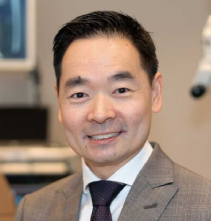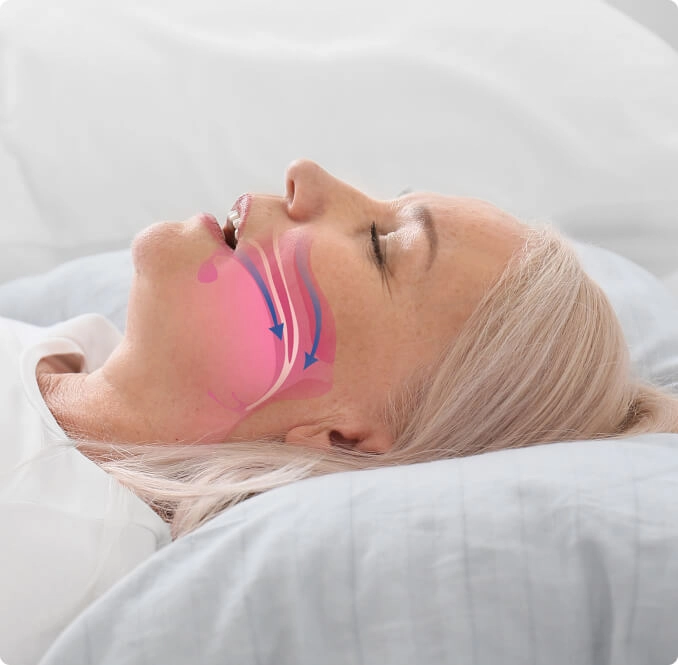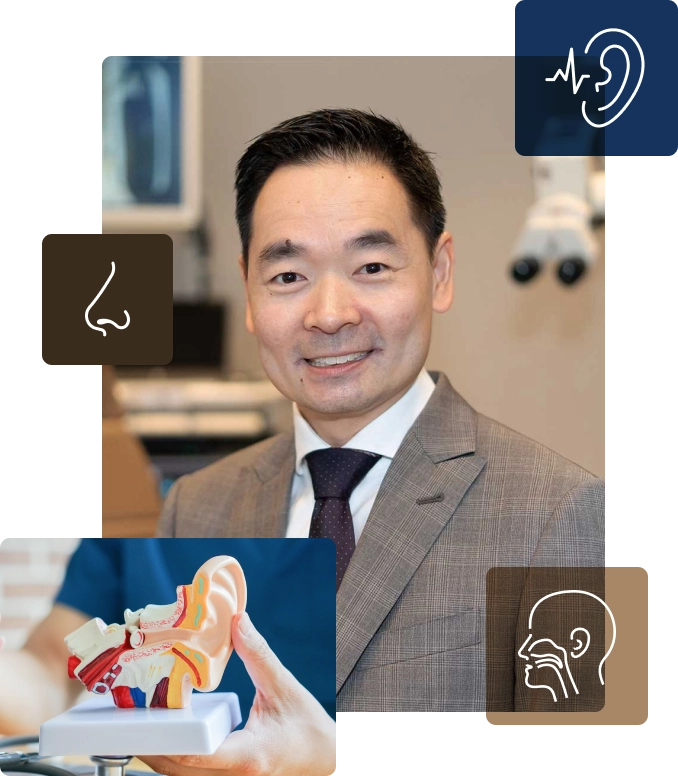- +65 6738 1616
- +65 8123 1214
- info@drbarrietan.com
Home > ENT Services > Obstructive Sleep Apnea (OSA)

Obstructive sleep apnea (OSA) is a sleep disorder characterised by repeated episodes of partial or complete obstruction of the upper airway during sleep. These interruptions in breathing typically last for 10 seconds or longer and can occur multiple times per hour. OSA often leads to reduced oxygen levels in the blood and frequent awakenings throughout the night.
In Singapore, about 1 in 3 adults were found to have moderate to severe OSA. Factors like the rising rates of obesity, a sedentary lifestyle and common Asian facial structures (which may include a smaller jaw or narrowed airways) all contribute to the high numbers.

Sleep apnea is a sleep disorder characterised by repeated breathing interruptions during sleep. There are three main types of sleep apnea:
This is the most common form of sleep apnea and occurs when the muscles in the back of the throat relax excessively, causing airway obstruction. Symptoms include loud snoring, gasping for air during sleep, and daytime fatigue.
Unlike OSA, this type involves the brain failing to send proper signals to the muscles that control breathing. This is more common in individuals with certain medical conditions such as heart failure or stroke, and results in periodic lapses in breathing effort.
Also known as treatment-emergent central sleep apnea, this type of sleep apnea manifests when someone being treated for OSA starts to develop symptoms of central sleep apnea. It typically requires adjustments in treatment to address both obstructive and central components of the disease.
Here are some of the most common symptoms associated with OSA:
Instances where one suddenly wakes up gasping for air due to blocked airflow.
Frequent tossing and turning, leading to a perception of non-restorative sleep
Frequent interruptions in sleep caused by breathing difficulties
Experiencing headaches upon waking due to low oxygen levels during sleep
Persistent fatigue and drowsiness throughout the day
Problems with focus, memory, and cognitive function due to poor sleep quality
Increased irritability, mood swings, and even symptoms of depression or anxiety
One of the most classic and noticeable symptoms
Reduced interest in sexual activities due to fatigue and hormonal imbalances
Resulting from mouth-breathing during sleep
Obstructive sleep apnea (OSA) is more than just disrupted sleep and loud snoring. If left untreated, it can lead to serious health complications, including:
Increased risk of developing heart disease due to prolonged periods of low oxygen levels during sleep
Increased risk of complications during and after surgery due to anaesthesia-related breathing issues
Higher likelihood of developing insulin resistance and type 2 diabetes
Frequent episodes of reduced blood oxygen can lead to hypertension
Increased risk of myocardial infarction as a result of chronic stress on the cardiovascular system
Mood disturbances and depressive symptoms arising from poor sleep quality and chronic fatigue
Persistent tiredness and lack of energy due to disrupted sleep, impacting one’s health, daily functioning, and quality of life
Increased risk of stroke due to fluctuations in blood pressure and oxygen levels
OSA can exacerbate existing heart conditions and contribute to heart failure
Potential for liver dysfunction and fatty liver disease
Understanding the possible causes of OSA can help one identify risk factors and implement preventive measures where possible. Common causes include:
Excess weight, especially around the neck, can add pressure on the airway, making it more likely to collapse during sleep.
Structural abnormalities or blockages in the nasal passages or throat can impede airflow.
Enlarged tonsils can obstruct the airway, particularly in children.
Similar to swollen tonsils, enlarged adenoids can also block airflow and contribute to OSA.
Chronic congestion or a deviated septum can restrict nasal airflow.
Reduced muscle tone in the airway muscles can lead to collapses during sleep.
A smaller or receding jaw can narrow the airway, increasing the risk of obstruction.
Alcohol relaxes the muscles in the throat, while smoking can cause inflammation and fluid retention in the upper airway.
Medications that relax muscles, such as sedatives or tranquillisers, can exacerbate airway collapse.
A family history of OSA can increase the likelihood of developing the condition.
Diagnosing OSA accurately relies on a comprehensive assessment of symptoms, medical history, and physical findings. These may include:
A detailed review of the patient’s medical history, including sleep habits, daytime symptoms, and lifestyle factors, can provide essential context for diagnosis.
The doctor may perform a physical examination on the throat, neck, and mouth, to identify any anatomical abnormalities or enlarged tissues that might contribute to airway obstruction.
This involves using portable monitoring devices at home to track breathing patterns, oxygen levels, and heart rate during sleep. HST is convenient and can provide initial data for diagnosing OSA.
Considered the gold standard for diagnosing sleep apnea, this comprehensive overnight sleep study is conducted in a sleep lab. It monitors physiological parameters, including brain activity, eye movements, heart rate, blood pressure, and respiratory effort.
Overnight oximetry measures blood oxygen levels continuously during sleep to detect drops that suggest apnea episodes.
There are various treatment options available to manage and alleviate the symptoms of OSA. These range from lifestyle changes and medical devices to surgical interventions, such as:
Losing weight among obese or overweight individuals can help decrease pressure on the airway.
Sleeping on the back can worsen OSA symptoms. Training to sleep on the side may help keep the airway open.
These devices reposition the lower jaw and tongue to keep the airway open during sleep, which is beneficial for mild to moderate OSA.
Medications or nasal sprays can help alleviate nasal congestion, improving airflow through the nasal passages.
A machine pumps air through a mask worn during sleep to maintain open airways. This is often considered the most effective treatment for moderate to severe OSA.
If non-surgical treatment options prove insufficient in alleviating symptoms, doctors may then recommend surgery. There are various surgical options available to remove or reduce tissues blocking the airway, such as uvulopalatopharyngoplasty (UPPP), removal of tonsils or adenoids, or more complex procedures like maxillomandibular advancement (MMA).
If left untreated, OSA can lead to serious health problems such as high blood pressure, heart disease, stroke, type 2 diabetes and cognitive decline. It can also cause chronic fatigue, poor work performance and a higher risk of accidents.
Yes. OSA (Obstructive Sleep Apnea) is classified as mild, moderate or severe, based on the Apnea-Hypopnea Index (AHI). The AHI measures how often breathing pauses occur per hour during sleep:
See an OSA specialist if you experience loud snoring, gasping or choking at night, daytime sleepiness despite a full night’s sleep, or morning headaches and poor focus. If your partner notices you stop breathing during sleep, book a check-up promptly.
OSA sleep clinics in Singapore usually provide two types of tests: a home sleep test (HST) and a sleep lab study (polysomnography). Your doctor will recommend the most suitable option based on your symptoms. Results are typically ready within a few days.
Yes. Medisave can be used for approved surgical treatments, such as tonsillectomy, nasal surgery or procedures to open the airway. Your clinic in Singapore can confirm your eligibility and guide you through the claims process.
During your initial visit, you will undergo a thorough clinical evaluation. Your doctor will carefully review your overall health, sleep symptoms, and any dental or jaw-related issues that might affect your breathing while you sleep. They will likely ask about snoring, fatigue, previous treatments or jaw discomfort to build a complete picture.
Watch Dr Tan’s webinar on snoring and sleep apnoea:
https://www.ixchange.com.sg/resources/for-clients/webinars-on-demand/sleep-better–live-better–tackling-snoring-and-sleep-apnoea
Read about the medical symposium on snoring and sleep apnoea held in Vietnam that Dr Tan presented in:
https://www.fvhospital.com/news/comprehensive-approach-and-treatment-of-snoring-and-sleep-apnoea-syndrome-important-cme-training-programme-kick-starting-strategy-of-bringing-singaporean-medicine-to-vietnam/
Senior Consultant ENT Specialist
MBBS (Singapore), MMed (ENT) (Singapore)
MRCS (Edinburgh, UK), FAMS (Otolaryngology)
Dr Barrie Tan is a dedicated ENT specialist with over 20 years of experience and a keen focus on hearing loss and cochlear implants, among others. Prior to setting up his own practice, Dr Tan was the Head of the ENT Department at the Singapore General Hospital (SGH) – the largest ENT department in Singapore – as well as the Director of the Centre for Hearing and Ear Implants at SGH.
Dr Tan was a President’s Scholar and completed his subspeciality Fellowship in Otology, Hearing Implant, Neurotology and Skull Base Surgery at the Ear Science Institute in Australia. Today, Dr Tan remains actively involved in the ENT fraternity, holding several leadership positions and being engaged in the nurturing of the next generation of ENT surgeons. He has organized numerous ENT conferences and continues to devote his time towards meaningful volunteer work and medical missions.
